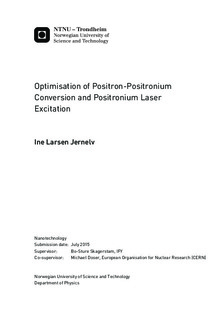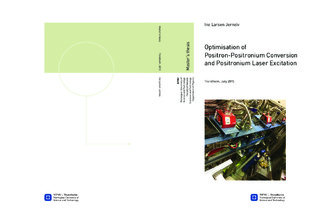| dc.description.abstract | The AEgIS collaboration (Antimatter Experiment: Gravity, Interferometry, Spectroscopy) at CERN has as its goal to directly measure the Earth's gravitational force on antimatter for the first time. Neutral antihydrogen atoms are an integral part of performing this measurement, and will be produced by the highly efficient charge-exchange reaction between a cloud of cold antiprotons and Rydberg-state positronium. This thesis work is done at CERN as a part of the AEgIS experiment, specifically in the positron system which is an essential part of the overall experiment. The focus of the work is on improvements of the positron system, testing different positron-positronium converter materials and the initial laser excitation of positronium. The improvements of the positron system are done in two parts: implementation of an acceleration system in order to compress the positron beam and investigating photon detectors for the detection of positron annihilation radiation. The result of accelerating the positron beam is a 3-fold temporal compression of the beam, and additionally a detector with good characteristics is found for the positron spectroscopy. Four different converter targets, each consisting of monocrystalline silicon with etched nanochannels, are then investigated for the production of positronium. The targets are one sample of p-type Si with crystal orientation (100), one p-type Si with crystal orientation (111), and two n-type Si samples with crystal orientation (100) made with two different production processes. These are investigated using lifetime spectroscopy, and only thetwo p-type samples display evidence for positronium emission. The p-type (111) is slightly more efficient than the p-type (100) and has a positronium lifetime of 142$\pm$1 ns, while the p-type (100) has a lifetime of 111$\pm$1 ns. Finally, laser excitation of positronium to the $n$=3 state with a UV laser pulse is demonstrated here for the first time, using lifetime spectroscopy. | |

